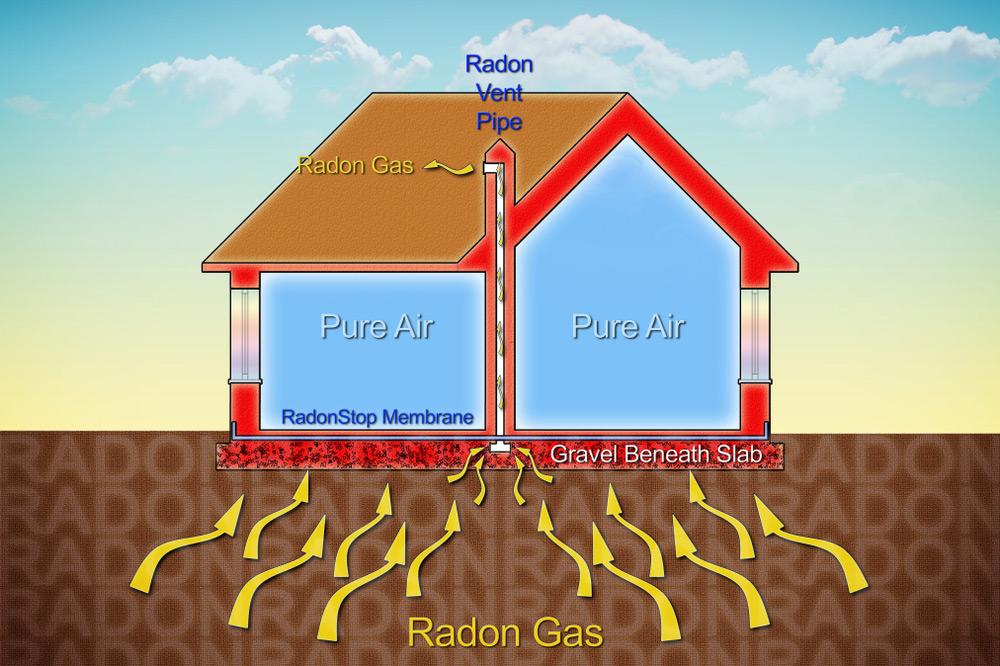In soil and rock, radon can be found as a result of the decay of uranium; it is a radioactive gas with no discernible smell or flavour. I'm sure you're thinking, "I've heard of uranium, but aren't bombs made from that?" True, but uranium may be found in rocks all around the world. It is a fact of nature that some places tend to have higher uranium concentrations than others.
The perils of radon and how they manifest
The quantity of radon a person carries around with them is the largest contributor to the total amount of radiation they are exposed to. Radon is a carcinogen that has been linked to high exposure levels. Radon may be the second leading cause of lung cancer in the United States, behind only cigarette smoking, which is responsible for 21,000 deaths annually. Lung cancer caused by radon exposure is the sixth greatest cause of cancer death worldwide. Radiation from radon can cause lung cancer, but it may also cause other types of cancer. The potential link between radon exposure and leukaemia is now being investigated.
Radon's Habitat
Keep in mind that radon gas is naturally occurring in granitic or shale-containing soil (the two of which carry larger than average amounts of uranium). But these are negligible sums indeed. Only around 1 gramme of radium, the element responsible for emitting radon into the atmosphere, is found in the top 6 inches of soil across an area of 1 square mile, on average. Extreme variations in radon concentration can be found across the globe, within a given location, and even within a single dwelling.
Do I have radon?
The foundation of your home is the primary entry point for radon, which escapes from the soil and enters your home through any openings. Well water is vulnerable to contamination by radon gas. Radon levels are known to be significantly greater in regions close to major fault lines; therefore, residents in Southern California should be aware of this and take appropriate measures.
You and your loved ones will be safer if you know how radon gas behaves. The first thing you should know is that radon gas, being heavier than air, has a tendency to accumulate in low-lying regions. Radon gas cannot accumulate to dangerous levels if ventilation is sufficient. However, radon gas can accumulate to dangerous amounts in closed environments like buildings, basements, and crawl spaces. The second is, if you're a smoker, please quit. Tobacco smokers are especially vulnerable to the harmful effects of radon because the combined effects of smoking and exposure to radon are larger than the sum of the two.
The Environmental Protection Agency estimates that 1 in 15 homes in the United States has radon levels that are too high. According to their standards, a lifetime of chest x-rays totaling around 200 is acceptable. Currently, they advise (together with the US Surgeon General) that radon levels be checked in every single home.
Radon: How to Perform a Test
Most home improvement stores will sell you a kit, but some people say you can't trust the results. It is recommended to employ an affordable radon removal toronto home inspector knowledgeable in radon testing. The only accurate way to know if the radon levels in your house are too high is to have a professional test performed. The first step of the non-destructive tests is to place a measuring equipment close to the floor of the basement. If the house inspector notices that you have granite countertops or flooring, more inspections may be necessary. Nothing is done besides putting the collectors where they should be. The testing site(s) have specific guidelines that must be followed, such as ensuring that all windows and doors are closed. If there are strong winds or a storm is expected, or if the humidity is very high, testing may be delayed (all of which may adversely affect the test results).
After 2–7 days, the inspector will come back to collect the gadgets and send them off to a lab for analysis. Shortly afterward, the results are often made accessible.
Strategies for Radon Abatement
If the radon levels in your house are high relative to the EPA's recommended limit, you should consider implementing mitigation (control) strategies to lower those levels. Positive pressure ventilation, which effectively generates a pressure differential, is one technique of mitigation (higher pressure in your home, gas cannot flow in). It's also a good idea to seal any openings in the floor to keep the gas from seeping up from the basement. Warning: contrary to popular belief, venting your basement or crawl area is NOT RECOMMENDED. Companies may introduce additional radon gas, which occurs naturally outside your home's foundation, if they use a poor mitigation approach.
Prospective homeowners, please read this!
Ask your real estate agent to add a radon inspection contingency in your purchase offer if you are in the process of buying a home. This provision specifies the highest radon concentration that you and your loved ones can tolerate. After that, commission a radon survey of your home. You should inquire about radon testing from potential house inspectors. This clause gives you the option to terminate the contract without financial penalty if the radon level is discovered to be higher than the threshold you specify in your contingency.
Information to keep in mind concerning radon gas
Even if your neighbor's house has tested positively for radon, that doesn't guarantee your own is unsafe.
Homes without basements are not safer against radon than those with them.
Radon levels differ from place to place, and sometimes even from one home on the same block to the next.
You may freely republish this article online or in print so long as you include the attribution information provided below.
The Housecall Property Inspections team is led by Darin Redding, who also runs a successful business in the San Diego area. Article Originally Published at: Radon San Diego
